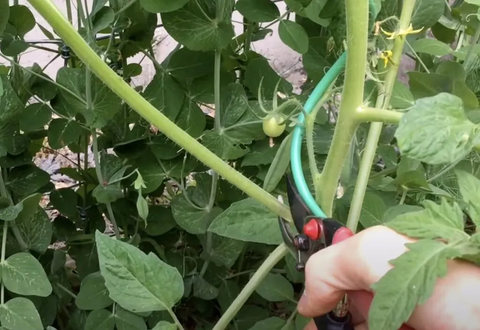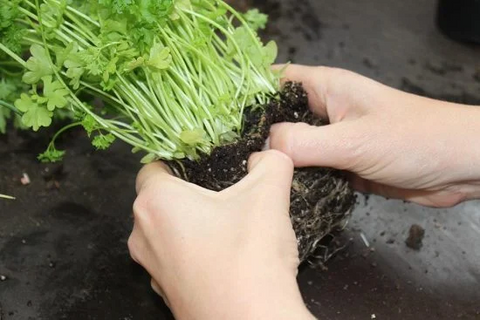In the world of garden design, vertical interest is a powerful tool for transforming your outdoor space from ordinary to extraordinary. Vines, with their climbing and sprawling nature, offer an excellent way to add texture, color, and drama to your garden's vertical surfaces. Whether you have a small urban balcony or a sprawling estate, there's a vine for every garden. In this comprehensive guide, we will explore the enchanting world of vines, from their practical uses to a curated list of stunning vines that will elevate your garden to new heights. The following content also has some reference value for raised garden beds.
The Magic of Vertical Gardening
Vertical gardening has gained popularity for several compelling reasons:
- Space Efficiency: In gardens with limited horizontal space, vertical gardening provides an innovative solution. It allows you to maximize your growing area by utilizing walls, trellises, pergolas, and fences.
- Aesthetic Appeal: Vertical gardens add dimension and depth to your outdoor space. They can serve as living walls, screens, or focal points that captivate the eye and create a sense of wonder.
- Privacy and Screening: Vines can act as natural screens, offering privacy from neighbors or unsightly views. They provide an attractive alternative to traditional fencing or walls.
- Shade and Cooling: On sunny days, vertical plantings can provide much-needed shade and contribute to a cooler microclimate. This can be particularly useful in hot climates.
- Wildlife Habitat: Vines often attract pollinators like bees and butterflies, as well as birds seeking shelter or nesting sites. They can promote biodiversity in your garden.
- Versatility: Vines come in a wide variety of species and cultivars, making it possible to find the perfect vine for your specific garden style, climate, and space.
Choosing the Right Vines
Selecting the right vines for your garden involves considering factors like climate, available space, desired purpose, and aesthetic preferences. Here are some key considerations:
- Climate: Ensure the vine you choose is well-suited to your local climate. Some vines are cold-hardy, while others thrive in warm, tropical environments.
- Space: Evaluate the available vertical space in your garden. Do you have walls, fences, or trellises that can support climbing vines, or do you need a compact vine suitable for a container or small space?
- Purpose: Determine the primary purpose of the vine. Is it for ornamental purposes, shade, privacy screening, or attracting wildlife? Different vines excel in various roles.
- Aesthetic: Consider the vine's foliage, flowers, and overall appearance. Do you prefer vibrant blooms, lush greenery, or unique foliage textures?
- Maintenance: Be honest about the level of maintenance you're willing to commit to. Some vines require regular pruning, while others are low-maintenance.

15 Stunning Vines for Vertical Interest
Now, let's delve into a curated list of stunning vines that will add texture, color, and drama to your garden's vertical surfaces. Each vine brings its unique charm and can be selected based on your specific needs and preferences:
1. Climbing Rose
- Flower Color: Various colors
- Notable Feature: Fragrant, classic blooms
- Care: Full sun, well-drained soil
- Purpose: A romantic and timeless choice for trellises and arches.
2. Clematis
- Flower Color: Varies by species and cultivar
- Notable Feature: Large, showy flowers
- Care: Full sun to partial shade, well-drained soil
- Purpose: Creates a stunning display when climbing walls, fences, or pergolas.
3. Trumpet Vine
- Flower Color: Orange to red
- Notable Feature: Trumpet-shaped flowers
- Care: Full sun, well-drained soil
- Purpose: Attracts hummingbirds and adds a vibrant touch to trellises.
4. Wisteria
- Flower Color: Purple, blue, or white
- Notable Feature: Long, cascading flower clusters
- Care: Full sun, well-drained soil
- Purpose: Creates a breathtaking focal point on pergolas or arbors.
5. Passionflower
- Flower Color: Varies by species and cultivar
- Notable Feature: Unique, intricate flowers
- Care: Full sun to partial shade, well-drained soil
- Purpose: Attracts pollinators and adds a touch of exotic beauty.
6. Virginia Creeper
- Foliage Color: Green, red in fall
- Notable Feature: Five-lobed leaves
- Care: Full sun to full shade, adaptable
- Purpose: Ideal for covering walls and providing fall color.
7. Hydrangea Vine
- Flower Color: White
- Notable Feature: Hydrangea-like blooms
- Care: Part to full shade, moist soil
- Purpose: Adds elegance and charm to shaded areas.
8. Honeysuckle
- Flower Color: Various colors
- Notable Feature: Fragrant, tubular flowers
- Care: Full sun to part shade, well-drained soil
- Purpose: Attracts pollinators and fills the air with sweet scent.
9. Bougainvillea
- Flower Color: Vibrant bracts in various colors
- Notable Feature: Profuse, colorful display
- Care: Full sun, well-drained soil
- Purpose: Adds a tropical feel to pergolas and containers.
10. Morning Glory
- Flower Color: Various colors
- Notable Feature: Showy, trumpet-shaped blooms
- Care: Full sun, well-drained soil
- Purpose: A fast-growing annual vine that adds a burst of color.
11. Moonflower
- Flower Color: White
- Notable Feature: Fragrant, night-blooming flowers
- Care: Full sun, well-drained soil
- Purpose: Creates an enchanting garden scene in the evening.
12. Silver Lace Vine
- Flower Color: White
- Notable Feature: Lace-like flowers
- Care: Full sun to part shade, well-drained soil
- Purpose: A delicate beauty for trellises and screens.
13. Climbing Hydrangea
- Flower Color: White
- Notable Feature: Adheres to walls
- Care: Part to full shade, moist soil
- Purpose: Adds elegance and texture to vertical surfaces.
14. Hops
- Flower Color: Green, cone-like structures
- Notable Feature: Used in brewing
- Care: Full sun, well-drained soil
- Purpose: An unusual vine that also serves a practical purpose.
15. Bittersweet
- Foliage Color: Green, yellow in fall
- Notable Feature: Striking red and yellow fruit capsules
- Care: Full sun to part shade, well-drained soil
- Purpose: Provides fall interest with its fruit.

Care Tips for Vertical Vines
Successfully nurturing vertical vines requires attention and care. Here are some essential care tips:
- Support Structures: Ensure that your support structures, such as trellises or arbors, are sturdy and well-anchored.
- Watering: Monitor the soil moisture consistently, especially for container-grown vines. Most vines prefer consistent moisture but not waterlogged conditions.
- Pruning: Regular pruning helps maintain the shape and control the growth of your vines. Prune according to the specific needs of the vine species.
- Fertilizing: Apply a balanced fertilizer during the growing season to promote healthy growth and vibrant blooms.
- Protection: Be vigilant for pests and diseases. Address any issues immediately to avoid them from spreading.
- Winter Care: Some vines may require protection or special care during the winter months, especially in colder climates.
Conclusion: Elevating Your Garden with Vertical Vines
Vertical gardening with vines is a creative and rewarding endeavor. It allows you to explore the endless possibilities of texture, color, and structure in your garden. Whether you're seeking vibrant blooms, fragrant flowers, or lush foliage, there's a vine that can fulfill your vision. With proper planning and care, your garden can become a vertical wonderland, showcasing the natural beauty and versatility of these remarkable plants. So, roll up your sleeves, choose your favorite vines, and start elevating your garden to new heights.









